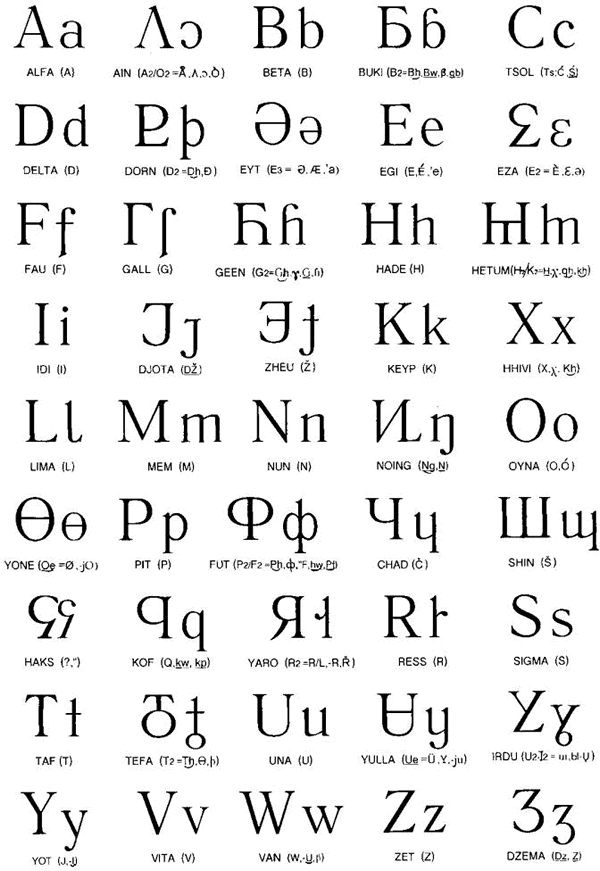The author has included comparatively few completely new signs, creating a unified style unity for the new alphabet based on existing letters. He tried to find the optimal number of letters (45) that have an aesthetically perfect shape, and are sufficient to write all the world's most widely-spoken languages. The same letters can be used to represent a number of phonemes, depending on the phonetics of a language.
Notable features
- This alphabet is intended as a practical, international and universal system for writing any language. In this respect it can be considered as an alternative to the IPA, though Interbet has fewer letters and that makes it possible to create a unified style and a harmonious graphic correspondence of the lowercase and capital letters, according aesthetic and psycholinguistic laws. The author took into account the optic resonance between the shape of a letter and the characteristics of a phoneme.
- Unlike the IPA, Interbet is based on the more flexible phonematic meaning of a letter. Letters do not represent a phonetically strict sound, but a sound in the frame of a particular sound zone, which has a systematic relationship to the other sounds. The main Interbet letters represent only one or two phonemes, while the additional letters (marked with 2 below) represent a greater range of phonemes.
- The usage of the marked letters depends on needs of each language, but always is based on the fixed principle of the phonetic relationships in the alphabet. For example, it changes from plosive to fricative or aspirate consonant. The second sign for the vowel E (E2) always signifies a more open sound than the first E, despite the fact that in different languages these sounds will be different. In French the first E is the closed E <é> and the second E is open E <è> and in German they are e and ä respectively. T2 in English denotes /θ/, and in Hindi /th/.
Interbet alphabet

The name Interbet comes from International Alphabet. The names of letters in Interbet are mostly based on the ancient Phoenician and Greek alphabets, as well as the letters of the other alphabets and on some practical names, traditional for linguists: with some changes, according to the principles of distinctivity from the other names, euphony and connection with a prototype
Sample text in Russian

Translation
Vitaly Vetash, an artist and a linguist, is the author of the universal phonematic alphabet Interbet. He created it having worked from 1977 to 1999.Sample text in English

Transliteration
All human beings are born free and equal in dignity and rights. They are endowed with reason and conscience and should act towards one another in a spirit of brotherhood.(Article 1 of the Universal Declaration of Human Rights)
The main question during the creation of Interbet was to determine the number and the set of the letters, which would be enough and aesthetically perfect. Besides the letters represented here on the picture, the author also created many possible variants of the letters, which you can see in the PDF article, where the problem of the international writing and this project are considered in detail.
Download an Interbet font (TrueType, 44K)
Further details of Interbet
http://www.astrolingua.spb.ru/ENGLISH/inter_eng.htm
The author would be glad to receive comments from linguists and designers of scripts which deal with the problem of the international writing. You can contact Vitaly Vetash at semiravet@yandex.ru









.jpg)
.jpg)


.jpg)





0 comments:
Post a Comment
Note: Only a member of this blog may post a comment.